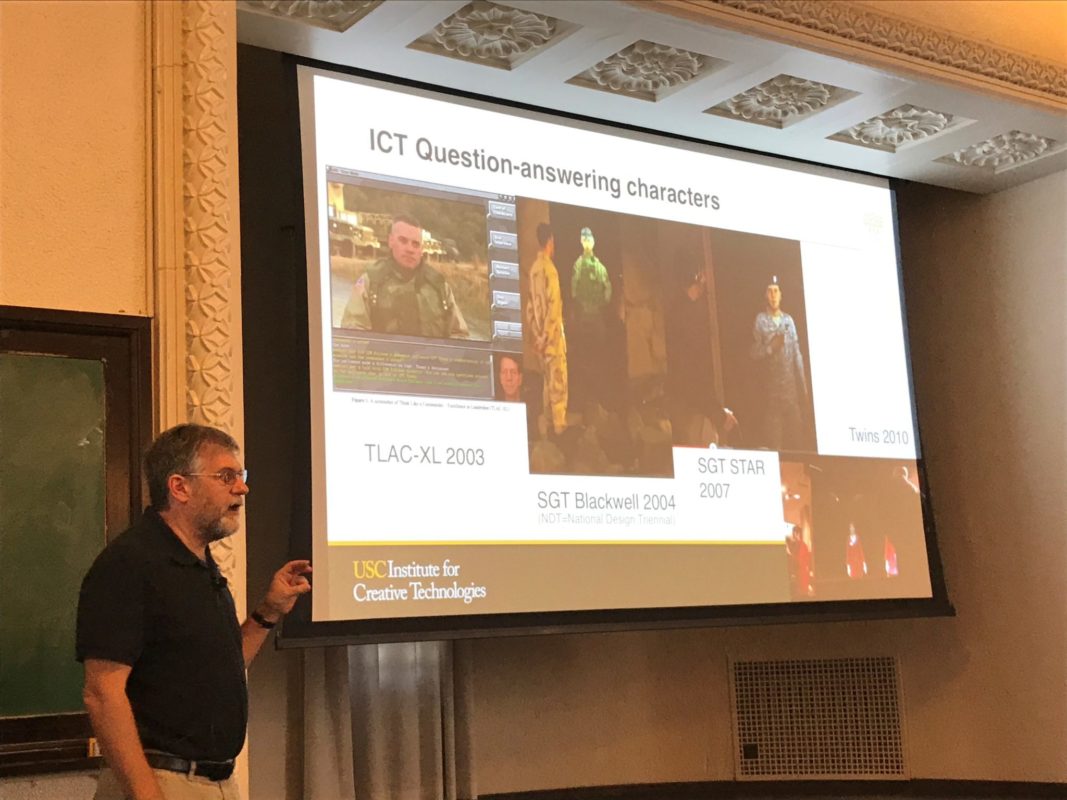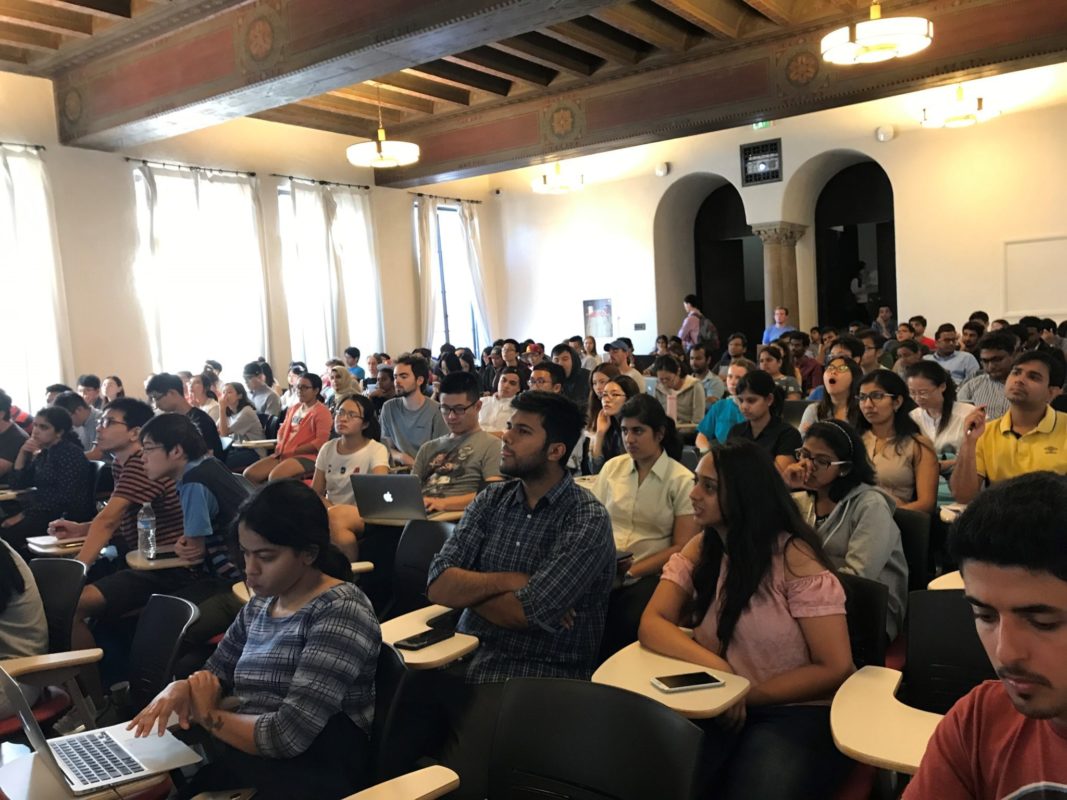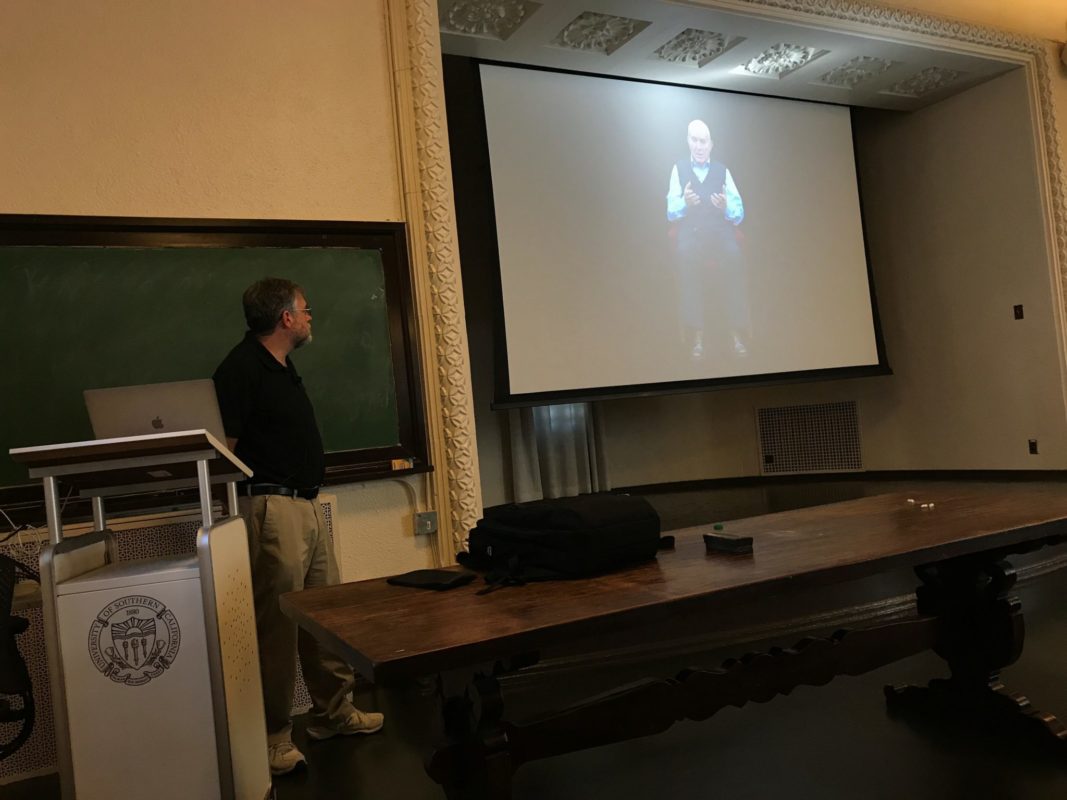
Dr. Traum presenting the work on question-answering characters.

Full audience in attendance at Dr. Traum’s CAIS seminar talk.
Dr. David Traum of USC’s Institute for Creative Technologies relayed the importance of preserving first person interactive holocaust narratives. Currently, the average holocaust survivor is 80 years old, resulting in the need to focus on retaining the experience of survivors and finding a way for listeners to still emotionally connect with their testimonies. In response to this issue, and with help from the USC Shoah Foundation, Dr. Traum has been able to record tens of thousands of stories to preserve holocaust narratives. The end goal of his project is to allow viewers to engage actively with testimony by being able to ask their own questions in real time to a survivor whose answers were previously recorded.
His project utilizes interactive display to create a 3D environment and time-offset interaction to change how viewers are able to interact with a survivor’s story through space and time. The demo he displayed for his audience was named Pinchas Gutter; Dr. Traum invited viewers to ask questions about Pinchas’ life and challenged them to come up with any question that popped into their head. Dr. Traum explained that his team had worked on ensuring the language models used would allow the audience to get the most relevant answers to their questions in the most authentic way using Google Chrome ASR technology.

Dr. Traum demonstrating the real time interactions with Pinchas.
Dr. Traum is also currently working on creating a digital survivor to combat sexual assault in the army. This technology has the potential to allow people to learn from first person testimony in a more interactive way to ensure that an individual’s experience is not only remembered but still emanates in the hearts and minds of listeners.



